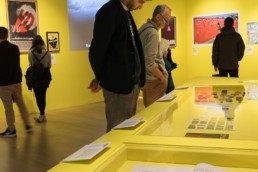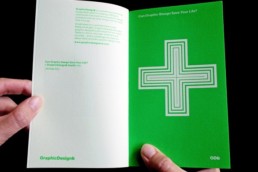Well can it?
That’s the question graphic designer Lucienne Roberts and educator Rebecca Wright have highlighted and explored by pulling together over 200 examples of design for an exhibition at the Wellcome Collection.
From posters, maps and signage to 16th Century anatomical pop-up books, learning apps and front-line responses to epidemics, the exhibition considers the role of graphic design and how it has been used to persuade, inform and empower.
‘What would life be like without graphic design?’
Well, for starters, the visual evolution of cigarette packaging has made a huge difference in the number of people smoking nowadays. The seductive luxurious purple Silk Cut adverts from the 80s is a world away from the plain packaged, graphic anti-smoking imagery you see around the world today. Both doing their best to persuade ‘potential’ customers in quite different ways.
Digital advertising has a focus here too, not least censorship. How do you spread awareness about breast cancer to your target audience if you’re banned in the process? The Swedish Cancer Society responded to Facebook’s censorship of their awareness videos by changing the banned illustrated pink circles with darker inner pink circles by simply changing the circles to squares, which was approved!
‘How has graphic design affected your wellbeing?’
Overall this exhibition goes to great lengths to show us the balancing act of well thought out graphic design on our lives. For example, health packaging created lazily is quite capable of endangering people. Seeing the visual process of how Bayer needed to make complicated named medicine easily understandable and also recognisable, they stamped their asprin pills with their logo, is quite engaging.
The graphic design pieces collected here all serve to illustrate the capabilities of how messaging can go beyond barriers such as language, sex and race to not just sell, but yes, to save your life too.




